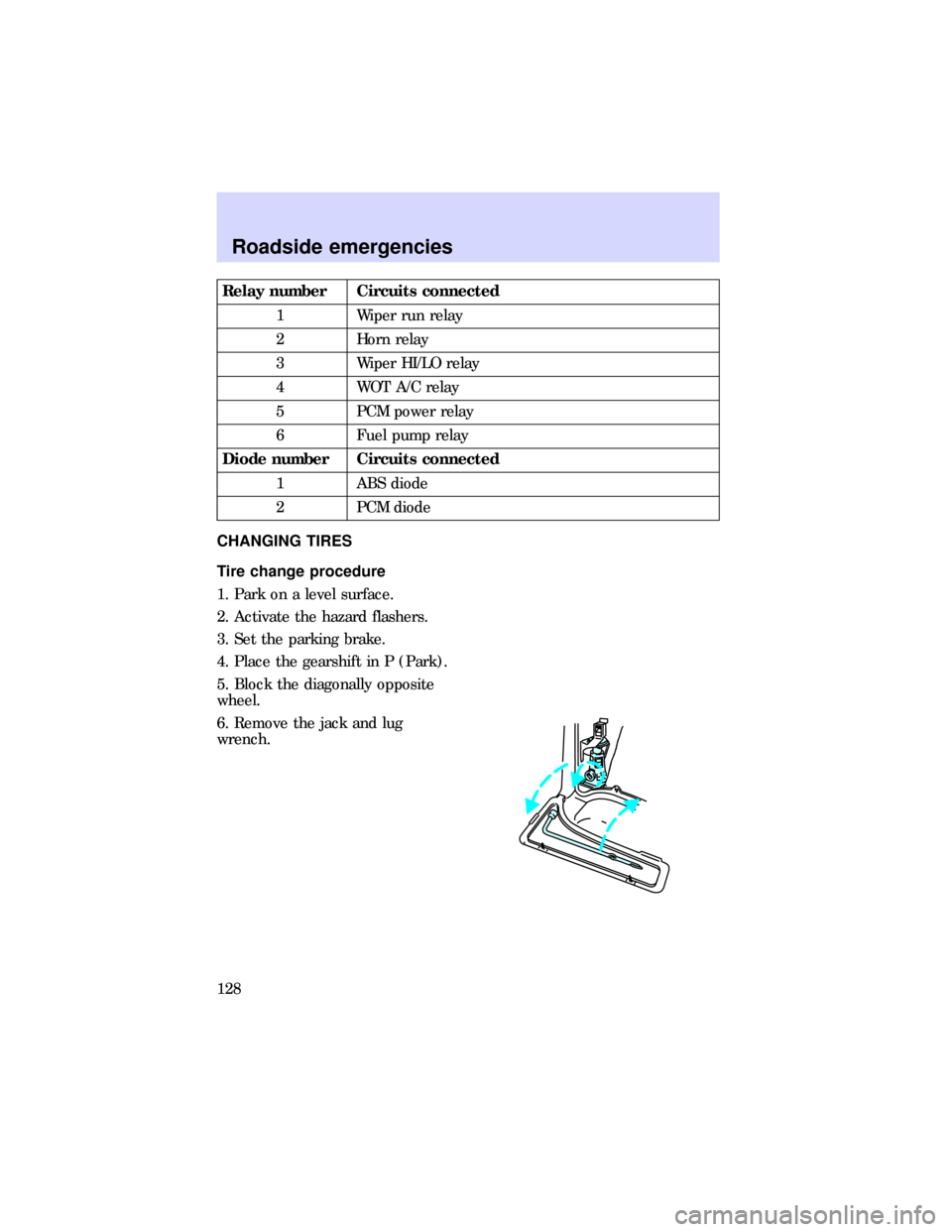change wheel Mercury Mountaineer 1997 Owner's Manuals
[x] Cancel search | Manufacturer: MERCURY, Model Year: 1997, Model line: Mountaineer, Model: Mercury Mountaineer 1997Pages: 197, PDF Size: 2.08 MB
Page 3 of 197

differences for towing, hauling, and
off-road operation. For this reason,
Mercury urges you to read and
understand the contents of the
Four-Wheelingsupplement.
Breaking in your vehicle
Your new vehicle goes through an
adjustment or breaking-in period
during the first 1,000 miles (1,600
km) of driving. During this period:
²Change your vehicle's speed
often as you drive. Do not drive
at one speed for a long time.
²Use only the type of engine oil
Ford recommends. Do not use
special ªbreak-inº oils.
²Avoid sudden stops. The
break-in period for brake linings
lasts for 1,600 km (1,000 miles)
of highway driving or 160 km
(100 miles) of city driving.
Information about this guide
This guide describes equipment
and gives specifications for
equipment that was in effect when
this guide was approved for
printing. Mercury may discontinue
models or change specifications or
design without any notice and
without incurring obligation.
Introduction
3
Page 103 of 197

features to make them capable of
performing in a wide variety of
off-road applications. Specific
design characteristics give them
higher centers of gravity than
ordinary passenger cars.
Utility and four-wheel
drive vehicles are NOT
designed for cornering at speeds
as high as passenger cars any
more than low-slung sports cars
are designed to perform
satisfactorily under off-road
conditions. Avoid sharp turns or
abrupt maneuvers in these
vehicles.
DRIVING OFF ROAD WITH ALL-
WHEEL DRIVE (AWD)
Your vehicle is specially equipped
for driving on sand, snow, mud,
and rough terrain and has
operating characteristics that are
somewhat different from
conventional vehicles, both on and
off road. The following information
will help you learn to properly use
AWD.
When using AWD, maintain
steering wheel control at all times,
especially in rough terrain. Since
sudden changes in terrain can
result in abrupt steering wheel
motion, make sure you grip the
steering wheel from the outside.
Do not grip the spokes.
Drive cautiously to avoid vehicle
damage from concealed objects
such as rocks and stumps. You
Driving
103
Page 106 of 197

heavy load. If vehicle speed drops
more than 15 - 25 km/h (8 - 14
mph) the speed control will cancel
automatically. Resume speed with
accelerator pedal.
If speed control cancels after
climbing the hill, reset speed by
pressing and holding the SET
ACCEL button or returning to
previous speed by pressing the
RESUME button (to resume
speeds over 50 km/h [30 mph]).
Automatic transmissions may shift
frequently while driving up on
steep grades. Eliminate frequent
shifting by shifting out of
D(Overdrive) into D (Drive).
Driving on snow and ice
An AWD vehicle has advantages
over two-wheel drive vehicles in
snow and ice but can skid like any
other vehicle.
Avoid sudden applications of
power and quick changes of
direction on snow and ice. Apply
the accelerator slowly and steadily
when starting from a full stop.
When braking, apply the brakes as
you normally would. In order to
allow the anti-lock brake system
(ABS) to operate properly, keep
steady pressure on the brake
pedal.
Allow more stopping distance and
drive slower than usual. Consider
using one of the lower gears.
If the vehicle is stuck, shift the
transmission in a steady motion
Driving
106
Page 128 of 197

Relay number Circuits connected
1 Wiper run relay
2 Horn relay
3 Wiper HI/LO relay
4 WOT A/C relay
5 PCM power relay
6 Fuel pump relay
Diode number Circuits connected
1 ABS diode
2 PCM diode
CHANGING TIRES
Tire change procedure
1. Park on a level surface.
2. Activate the hazard flashers.
3. Set the parking brake.
4. Place the gearshift in P (Park).
5. Block the diagonally opposite
wheel.
6. Remove the jack and lug
wrench.
Roadside emergencies
128